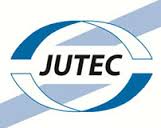EN ISO 11611 is a European standard that pertains to protective clothing designed for use in welding and allied processes. The title of the standard is “Protective clothing for use in welding and allied processes.” It falls under the category of personal protective equipment (PPE) and is intended to ensure that protective clothing worn by welders and workers in similar processes offers effective protection against heat, flame, and spatter.
EN ISO 11611 specifies the requirements and testing methods for protective clothing that is intended to be used by individuals who are involved in welding, cutting, and similar processes that generate heat, sparks, and molten metal splashes. The standard aims to minimize the risk of burns and other injuries associated with these processes.
The main parameters covered by EN ISO 11611 include:
- Flame Spread Resistance: The clothing’s ability to resist the spread of flames across its surface is tested to ensure protection against the ignition of nearby flammable materials.
- Material Performance: The standard addresses factors such as tensile strength, tear resistance, and seam strength to ensure the clothing’s overall durability.
- Welding Performance: The clothing’s resistance to heat, flame, and welding spatter is evaluated to ensure it can withstand the conditions encountered during welding and similar processes.
- Design and Construction: EN ISO 11611 outlines requirements for the design and construction of the clothing, including features like closures, fit, and accessibility.
EN ISO 11611 categorizes protective clothing into two classes:
- Class 1: Clothing in this class is designed for less hazardous welding and similar processes. It provides protection against less severe exposure to spatter and radiant heat.
- Class 2: Clothing in this class is intended for more hazardous welding and allied processes. It offers higher levels of protection against more severe exposure to spatter and radiant heat.
Garments conforming to EN ISO 11611 are often labeled with the relevant class information to indicate the level of protection they provide.
It’s important to consult the latest version of EN ISO 11611 or any relevant updates to ensure accurate and up-to-date information, as standards can change over time.
 3M
3M Ansell
Ansell Dellta Plus
Dellta Plus Drager
Drager edelrid
edelrid Honeywell
Honeywell JUTEC
JUTEC lakeland
lakeland MSA
MSA New Pig
New Pig Weldas
Weldas